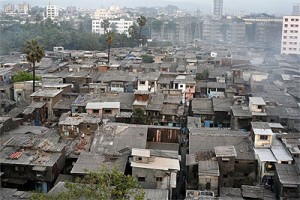An op-ed in today’s New York Times, by Matias Echanove and Rahul Srivastava of Mumbai, comments on a proposal for a $300 house as a solution for slum-dwellers in Third World countries. The authors correctly criticize the idea. Architects never cease to be fascinated by “minimal” housing (preferably prefab), and a $300 house sounds like the housing equivalent of the $100 one-laptop-per-child computer. But it isn’t. Twenty-five years ago, when I was doing research on slums in Indore, we discovered several interesting facts that contradicted the conventional thinking about how the poor live (available as a report, How the Other Half Builds, Vol I). For one thing, their homes were not all small—far from it. The reason was that households weren’t small. Nuclear families were few and far between, most families were extended, and most houses were home to 2-3 families. In the five communities we studied, there was no simple correlation between family income, family size, and sharing. We concluded that the reason for sharing was not necessarily economic, but was due to family ties, caste, or work groups. The last is important, for home often also means work place. So houses accommodate work spaces—and shop spaces—as well as living spaces. Further, building a house is not such a big problem for the poor—there are plenty of second-hand and recycled building material available in slum communities (and in the surrounding city). What is often a problem is water supply and especially waste (excreta) disposal. Better to put one’s energies there.

